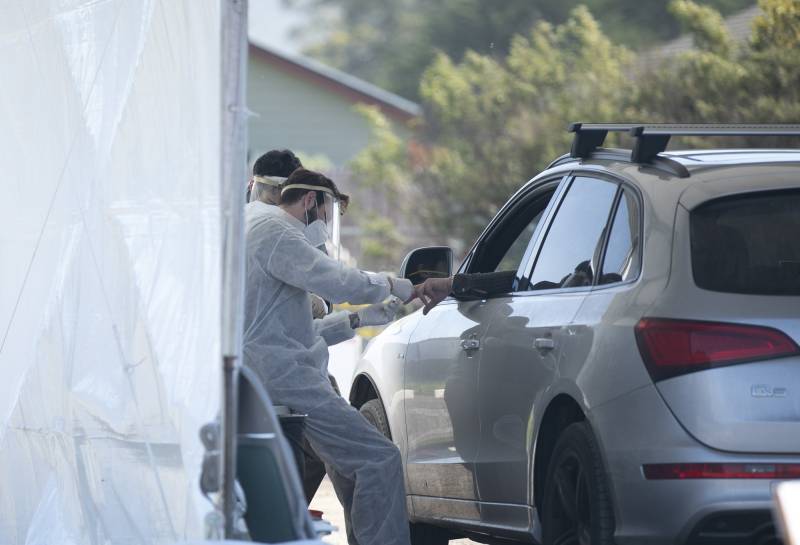Campbell’s story is also one of an “essential worker,” which includes food production and grocery store employees. Yet accessing a test was no easier for him. Essential workers, with and without symptoms, are on “Tier 1” of the state’s current testing guidelines, which means they should be prioritized.
Sherrie Totoki, 33, got tested at San Francisco Community College. She was told she’d have results in two to three days, so she made plans to visit her sister who had just given birth in Los Angeles. After a week with no results, she was told the lab never received her test.
She said that when she got to Los Angeles, she kept away from her family until she found an urgent care center in Pasadena that offered a new type of diagnostic test, known as an antigen test, designed for rapid detection of the virus.
An hour and $125 later, she had a negative result. Later that day, she got a second message from her original free test in San Francisco, notifying her that her test had been found. The result: negative.
“It was worth it because I wanted to see my nephew, but I spent a lot of time trying to get tested,” Totoki said.
For 74-year-old Andy Lagomarsino of Stockton, waiting for results wasn’t the problem — it was the confusion around how to initiate the test. He said he drove to Sutter Gould Medical Foundation in late June. He was directed to drive up to a parking space and call the number on the parking post for further instructions. No appointment was required; it seemed easy enough, he said.
As Lagomarsino tells it, he spent more than an hour on the phone, but couldn’t get anyone to answer. He left and came back a second day. Then a third. “Eventually I got tested, but I had to make a big stink,” he said. “Trying to get tested was the biggest circus.”
His results came in the next day.
In an effort to improve testing, California has established a system of more than 1,000 public and private testing sites. The state also put out a testing information website, where people can find testing locations nearby. Many residents jumped at the chance, if only for peace of mind. In the CalMatters survey, 84% of respondents said they sought testing even though they didn’t have symptoms.
California, along with the rest of the country, is again experiencing a shortage of supplies needed for testing, resulting in canceled appointments, the closing of test sites and longer waits for results.
On July 4, public health officials asked California laboratories to prioritize patients with symptoms and those in hospitals, nursing homes or prisons.
“It’s an interesting moment,” Newsom said during a press briefing last week. “There’s some supply chain concerns, at the same time, we’re doing a record number of tests.”
